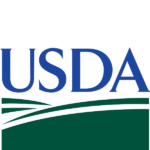
The U.S. Department of Agriculture’s National Institute of Food and Agriculture (NIFA) recently awarded over $8.5 million in funding for 29 research and Extension grants that will advance solutions to critically important problems in U.S. agriculture.
“These NIFA investments in user-inspired projects bring together researchers, Extension experts, and practitioners to find solutions that can be rapidly adopted by the agricultural community,” said NIFA Director Carrie Castille.
“Critical problems impede efficient food and agricultural systems at local, regional, and national scales,” Castille said. “Work supported by this federal investment enables partnerships and close coordination across the entire food and agriculture spectrum on efforts to yield practices that meet pressing needs.”
These grants, which are part of NIFA’s Agriculture and Food Research Initiative, include some projects co-funded by commodity boards through a Farm Bill provision by the American Pulse Association and The Cotton Board. The 29 funded projects include:
- University of Arizona, Tucson, Arizona: “NGS-Surveillance and Phylogenomic Analyses of Cotton-Infecting Plant Viruses to Inform Breeding Strategies for Virus Resistance in Cotton” ($294,000)
- Colorado State University, Fort Collins, Colorado: “Tracking the Movement of Cytospora Pathogens in Orchards to Develop Novel IPM Strategies” ($298,794); “Diversity, Distribution and Host Resistance to Emerging Viruses and Viroids of Hemp” ($299,451)
- University of Georgia, Athens, Georgia: “Advancing Host-Plant Resistance to Cotton Leafroll Dwarf Virus, an Emerging Cotton Viral Disease” ($294,000)
- University of Illinois, Urbana, Illinois: “High-Powered Air Compressors as Preventative Tools to Reduce Farmer Injury and Death Related to Grain Bin Entrapments” ($300,000); “Advancing Food Recovery in K-12 School Cafeterias by Removing Food Safety and Operational Barriers of Share Tables” ($299,947)
- Purdue University, West Lafayette, Indiana: “Real-Time Measurement of Suspended Dust Concentration from Live Video Stream” ($300,000)
- Iowa State University, Ames, Iowa: “Enhancing Conservation, Access, and Generational Transition of Iowa Farmland Through Women Landowners” ($300,000)
- Agricultural Research Service, Beltsville, Maryland: “Development of Novel Management Tools for Cotton Leafroll Dwarf Virus and its Insect Vectors Using Molecular Virology” ($294,000)
- University of Maryland, College Park, Maryland: “Evaluating the Effect of Postharvest UV Irradiation on Red Skin Color, Phenolic Compounds and L. Monocytogenes Survival on Honeycrisp Apples” ($299,925)
- Presidents and Fellows of Harvard College, Cambridge, Massachusetts: “Adaptive Forest Management Options for White Ash Influenced by the Invasive Emerald Ash Borer” ($299,999)
- Michigan State University, East Lansing, Michigan: “Evaluation of Damage and Integrated Management Strategies for Two Lesion Nematode Species in Carrot and Wheat Systems“ ($300,000); “Supporting Small and Very Small U.S. Meat/Poultry Processors in Complying with USDA FSIS Regulatory Changes for Fully-Cooked Products” ($299,817)
- Montana State University, Bozeman, Montana: “Therapeutic Impacts of Dietary Pulses on Bile Acids” ($294,000)
- University of Nebraska, Lincoln, Nebraska: “Developing Adaptive Grazing Management Strategies for Optimizing Corn Residue Use” ($300,000); “Reducing Field Worker Exposure to Pesticides via Agricultural Data Connectivity and Mobile Apps” ($299,529)
- Cornell University, Ithaca, New York: “Improving Conifer Establishment Using Sustainable Pest Management and Soil Health Practices” ($255,696)
- New York Agricultural Experiment Station, Geneva, New York: “Combatting Stemphylium Leaf Blight of Onion: A Critical Threat to the Sustainability and Profitability of Onion Production in New York” ($299,575); “Root Traits and Rapid Decline of Apple Trees in High-Density Orchards” ($299,365)
- Oklahoma State University, Stillwater, Oklahoma: “Rescuegrass Threatens Crop/Livestock Systems in the Southern Great Plains” ($275,496)
- Oregon State University, Corvallis, Oregon: “Feeding Spent Hemp Biomass to Cattle: Cannabinoid Residuals, Animal Health, and Product Quality” ($299,950); “Cleaning and Sanitizing Surfaces on Produce Farms: Optimizing What, How, and When” ($299,999)
- South Dakota State University, Brookings, South Dakota: “Characterization of Corn Harvested at High Moisture in Cattle Feeding Yards in the Upper Midwest” ($299,369); “Developing an Integrated Management of Bacterial Leaf Streak in Spring Wheat in Northern Great Plains” ($299,992)
- University of North Texas, Denton, Texas: “Generating Pathogen- / Pest-Resistant Non-GMO Cotton Through Targeted Genome Editing of Oxylipin Signaling Pathways” ($294,000)
- University of Wisconsin, Madison, Wisconsin: “An Integrated Approach to Optimize Use of Sexed Semen in Dairy Herds” ($299,999); “Dairy Beef Crossbred Feeding Management: Applied Research and Extension Project” ($299,650)
- Nevada System of Higher Education, Reno, Nevada: “COVID-19 Rapid Response Toolkit for Tribal Extension Agents” ($300,000)
- Tennessee State University, Nashville, Tennessee: “COVID-19 Rapid Response: Developing the Technology of Pandemic Responses for Garden Centers and Nurseries” ($300,000)
NIFA invests in and advances agricultural research, education, and Extension across the nation to make transformative discoveries that solve societal challenges. NIFA supports initiatives that ensure the long-term viability of agriculture and applies an integrated approach to ensure that groundbreaking discoveries in agriculture-related sciences and technologies reach the people who can put them into practice. In FY2020, NIFA’s total investment was $1.95 billion.
Sopurce: www.nifa.usda.gov; March 17, 2021